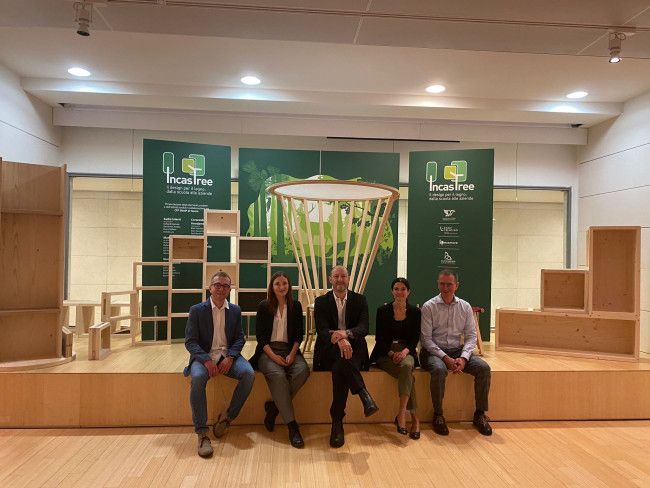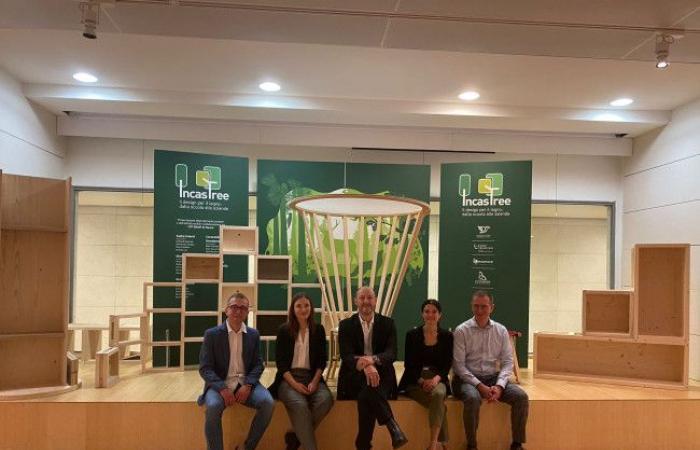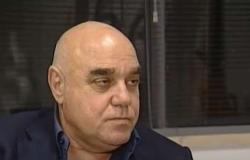“Please, we don’t need to handlers! We need open and thinking heads, connected to capable hands”.
With this exhortation The architect Giorgio Caporaso, staring at the audience, concludes his speech. It is a predominantly very young audience, which is unusual for an event where we talk about wood and design. It is mostly made up of students of the “Wood School” of Tesero, in Val di Fiemme, who are actually the real protagonists of this evening. A contemplative silence falls in the room and I think back to my grandmother, who often used that very term, handlingto scold me when I did things with too much approximation, just for the sake of doing them.
This is not the case with the guys from ENAIP in Tesero, who will soon present their work, created as part of the “IncasTree” project in local companies and born precisely from Caporaso’s projects. They used it PEFC certified timber partly resulting from spruce trees attacked by the bark beetlethe beetle which following the Vaia storm and driven by climate change is causing numerous damage to the spruce forests of the Alps. The IncasTree project is part of the awareness campaign Forests Are Home which, created by PEFC International, promotes sustainable procurement in the wood-furniture sector involving all players in the supply chain, looking for a new way of producing sustainably. In this case, the “magic joint” (regarding the title of the project!) was created by PEFC and the Wood School, together with the architect Caporaso, the Confartigianato Trentino Artisans Association and 5 local companies in the wood-furniture sector. : Fiemme Tremila-Defrancesco Arredamenti, Corazzolla, Matika Wood, Zadra Interni and Giemme Arredamenti.
A successful combination of territory, school, design and companies. A mix of approaches and knowledge. A fit between generations.
Architect Caporaso has just illustrated the idea – but perhaps it is more appropriate to talk about mission – which he has been working on for years. It’s about an approach to design that he enclosed in a 15-point Manifesto and which takes the name of “Circular Design”. Listening to him passionately explain the key points of his Manifesto, Caporaso made us understand how certain terms such as “circularity” and “sustainability” are actually very often abused.
In fact, it is not enough that a product is made with a natural material and that, at the end of its life, it is recyclable or biodegradable to define it as truly “circular” or “sustainable”..
The product must be designed with its entire life in mind right from the start: production, use, disposal/recycling. To do this, it is first necessary for the product to be designed to ensure that its life is as long and varied as possible. To produce it, it is necessary to use natural, renewable, eco-compatible, recycled or recyclable materials, but it is also necessary to act on the quantity (as little as possible) and the type (renewable) of energy necessary to create, store and move them. It is necessary to limit the pollution generated by the production phase, just as it is important to reduce processing waste. And again, it is necessary for a product to be easily assembled and disassembled, repairable, transformable, modular, and that at the end of its life – as far in time as possible – it can be easily disassembled and then reused or recycled, thus bringing it to new life. In short, it’s about a real paradigm shift in designwhich sees the designer not only as a creative person, but as a “composer”, capable of writing the various “scores” of an entire orchestra called to play the symphony of true circularity, of true sustainability.
I think about how lucky these guys werecalled to deal with this type of design and then get their hands dirty, in the company, working hard alongside real craftsmen to translate the projects into real objects. This is how the bar of training is raised. This is how a mountain professional school can produce “open and thinking heads” and not just “handlers”.
It’s their turn now. Divided into five groups and guided by the artisans who accompanied them, they will have to present the products, also explaining what they have learned and what they take home from this experience. From afar I scrutinize the gazes of their teachers, who mix emotion and concern. They were good, yes, at working in the company but… how will they manage with the microphone in their hands? They are still teenagers from a professional school and today’s young people, as we know, no longer read, don’t get information, are always on the phone…
And instead, a sort of miracle begins to take placewhile the eyes of the older people in the room become more and more clear.
One by one, in a different way but all traveling on the same wavelength, the Wood Students begin to undermine something great and profound from within themselves. There is pride and emotion, there is fun and above all passion. They talk about wood as a precious asset of their territory, about the sustainability of this extraordinary raw material, about working in the company as a school of life, about transforming a designer’s project into a concrete product as a great challenge, faced with commitment, dedication and team spirit. They proudly talk about their intuitions, joke about their mistakes, have a piece of paper in their hand but after reading a few lines they often drop it to leave room for their emotions. They speak of the depreciation of that wood resulting from the bark beetle attack – made bluish by the beetle’s symbiotic fungi (we have already talked about it here) – as an injustice, against which they felt a moral obligation to fight. Giving a second chance to that “less fortunate” wood meant giving a new one chance also to themselves and their valleys, which have been in such difficulty since the storm at the end of 2018 onwards. It meant doing your part.
I take the microphone back in my hand at the end of their testimonies, while a long applause envelops the room. I try to say something, but I realize my voice is blocked by a lump in my throat. Damn emotion! It shouldn’t happen to a moderator, called to professionally manage an important event like this! I even put on my jacket for the occasion and now here I am, clearly embarrassed, searching for words that struggle to come out.
A bit slurring, I then repeat that phrase from the architect Caporaso: “Please, we don’t need to handlers! We need open and thinking heads, connected to capable hands”. And I add this it does not only apply to woodworking, but to all the great challenges that our forests and mountains will face in the near future, between abandonment, climate crisis, old models that are difficult to undermine and a world all around that does not invest enough in the High Lands in a modern way. These kids are a very important part of the future of our mountains, they are learning to work with a renewable local raw material in a circular and sustainable way, they have a passion and desire to stay, to invest their lives in these valleys. All this should be a model, to be studied and exported everywhere in the Italian mountainsnot a simple initiative like many, to be forgotten after the gala evening.
I take a look, at the end of the room, at the five design objects displayed in plain sight. And I think that even from a chair, from a bookcase, from a bench, from a screen, but above all from a “School of doing” like that of Tesero, it is possible to build a small-large part of the new path of the Altri Montagne.
School of doing. They call themselves that, but starting tonight I propose an addition. “School of thinking and doing”because we no longer need… to handlers!

All product photos are by Elisa Fedrizzi








